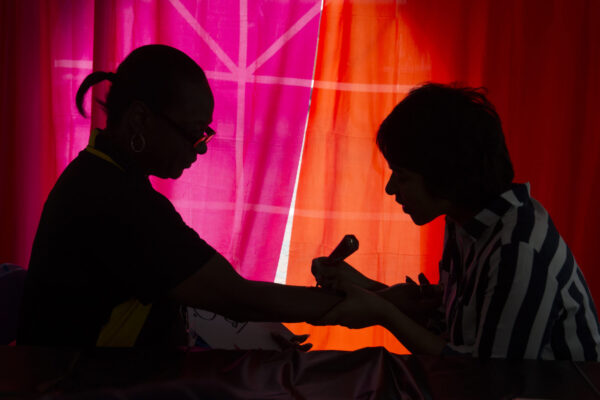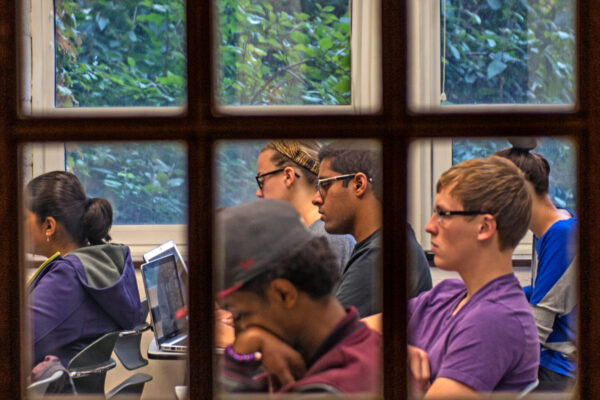As we anticipate and prepare for the Department of Education’s upcoming summit in Washington, DC, this piece focuses on the theme of the gathering: Raise the Bar: Attaining College Excellence and Equity.
As the department has said, the summit reflects its “commitment to ensuring that students of all backgrounds, ages, and income levels can succeed in any postsecondary pathway.” The event will focus on two critical areas for student success: (1) securing the mental health of America’s college students, and (2) attaining college excellence and equity advising.
Thriving communities: A national movement
College and university presidents strive to create thriving campuses by fostering a welcoming and inclusive environment where everyone feels a sense of belonging. Think of your own campus, or one with which you are deeply familiar. Picture a student finding sanctuary in a quiet corner of the student union after a difficult day. Or a first-generation student, either commuter or residential, who is excited to return for the new semester thanks to a supportive mentoring program and a helpful advising office. Imagine an environment where every student feels that the institution and individuals within the institution care about them and their success.
These are not isolated anecdotes, but rather they reflect a movement within higher education toward building thriving campus communities and identifying the vital conditions necessary to make it so. Institutions are shifting the narrative, asking: What does it take to create a community where every student feels embraced, supported, and empowered to flourish?
The original Thriving Communities initiative is a national framework outlined in The Federal Plan for Equitable Long-Term Recovery and Resilience, published in the wake of the COVID-19 pandemic. The plan identifies the vital conditions for health and well-being that create and sustain a healthy community that has, at its core, a sense of belonging for every community member. As the plan pointed out, “Healthy, fulfilling relationships and strong social supports provide a foundation for individuals and families to thrive. These relationships and supports build social ties, trust, and cooperation in communities and foster connections that bring people together and shape a common vision.”
Nationally, the vital conditions within the thriving community’s framework include access to education, health care, food, housing, transportation, and employment. This framework provides a road map for leaders to envision, create, and lead unified communities. Rather than thinking about each vital condition as a separate variable, envision an ecosystem in which all of these vital conditions intersect and—together—result in every community member thriving and feeling that they are exactly where they belong.
The higher education model
This “thriving communities” model is not only applicable to regional communities; it is also a perfect fit for higher education institutions and the vital conditions that are needed for faculty, staff, and students to feel they belong and succeed. Presidents and institutional leaders who are besieged with internal and external pressures and politics can bring together and implement these conditions.
In a previous post, I discussed the four criteria needed for presidential leadership to effectively manage crises:
- Students, faculty, and staff on campuses must feel safe from physical violence;
- Students, faculty, and staff should have emotional and mental health support when needed;
- Campuses should be an educational haven for students to learn and demonstrate critical thinking, healthy conversations, perspective taking, and intercultural communication to successfully cross lines of difference; and
- Leaders must consistently communicate to the campus community that the first three criteria are the institution’s top priorities.
Keeping those criteria in mind and extending them to the national Thriving Community initiative model, successful presidents and institutional leaders should embrace and provide access to the following vital conditions for every student:
- Supportive mental and physical well-being
- Nurturing, caring, on-going, and effective advising
- Housing on- or off-campus
- Learning in and outside of the classroom
- Support services needed for academic success
- Financial support services
- Food on campus or through food pantries
- Employment during their educational journey and post-graduation
The higher education ecosystem
As with any physical environment, the higher education community (whether virtual or face-to-face) is an ecosystem where each of these vital conditions must coexist in concert with the others to truly become a thriving community for every student. Successful presidents lead with a focus on these vital conditions with the vision of how, when, where, and why these conditions can coexist, be supported, and be accessible to all students.
We know from the literature and from anecdotal experience that when a student feels that at least one faculty member, staff member, or peer cares about their well-being, the student is more likely to graduate and secure employment post-graduation. This element of caring is an institutional obligation that applies for both undergraduate and graduate students.
For scores of students, navigating the higher education ecosystem is confusing, intimidating, and often results in the feeling that “this is not where I belong”. Increasingly, for example, this is the lament from students, domestic or international, whose parents never attended college as well as students who may be from lower socioeconomic and underrepresented populations. How do we, as institutional leaders, create the ecosystem where every student feels they are supported and that they belong? It begins with the understanding that every faculty member and every staff member is a significant part of a culture of caring and compassion. Such a culture can be demonstrated by going the extra mile to connect with students, exhibiting empathy for their circumstances, listening to their concerns and questions, and caring about their successes.
This can also become part of the physical infrastructure of the institution. Physical structures should provide spaces and places that are welcoming, comfortable, and non-intimidating for all students. This can expand from a traditional student union to, for example, spaces strategically dedicated to activities like interfaith gatherings, career support services, mental and physical well-being, financial literacy, food pantries, student organizations, collaborative study spaces, meditation spaces, co-curricular activities, student well-being, international services, first generation services, veteran services, and disability services.
Overcoming obstacles
It is typical for campuses to encounter resistance when faced with institutional changes. Focusing on the vital conditions to create the thriving community is a prime target for resistance related to human resources, time commitment, financial resources, and students questioning why they even need these wrap-around services. New ways of collaborating with community partners and creative investment of human and financial resources are viable options for implementing positive changes to achieve the thriving community.
Staff resistance: Time and money
The most common refrain from faculty and staff is that there just is not enough time to do all that is needed or required. With department and institutional budgets shrinking, there’s worry that there aren’t sufficient funds to maintain the necessary support and services for a thriving university community. But as wrap-around services are implemented throughout the student pipeline—from recruitment to retention to post-graduation—the resulting benefits, including student satisfaction, community credibility, higher retention and graduation, and increased revenue will clearly demonstrate the return on investment.
Student resistance: Time and commitment
Some students may not see the benefit of having wrap around services available and accessible. Educating students (and their families) on the importance and benefits of the wrap around services will be a critical component of empowering students and their willingness to access these services. Conversely, where some of these services may be a student requirement, there should also be expectations and consequences for lack of participation.
Regional collaborations and partnerships
As institutions become more integrated with their communities, a kind of seamlessness emerges where boundaries are blurred and the community partners are available to the institution, while the institution provides great value to the community at the same time. A perfect example of the blurred boundaries between the institution and the community is the motto and vision of Portland State University, where the overhead pass when you drive into the city of Portland reads: “Portland State University—Let Knowledge Serve the City.” Through these institution-community partnerships, resources will become available for services related to students in the areas of mental health support, workforce development and job placement, financial literacy, veteran support, multi-cultural services, disability services, and so much more. No longer does the university need to provide all of these services themselves; rather, community partners can provide support and services that will further the ecosystem of the institutional thriving community. Together, the region and the university will thrive together.
The president’s role
Every one of us can reflect on our own stories or know of others in their higher education journey who fell through the cracks, dropped out, stopped out, or tripped along the way because they felt alone, or isolated, uncertain to whom to ask questions, or, most importantly, that there was not at least one person who cared. We often hear the phrase, “I don’t want to be just another number. I want to be recognized for who I am.” Keeping that in mind, wrap-around student services should be personal, deliberate, consistent, and flexible, incorporating student expectations and accountability.
The president leads by example and sets the vision for the institution. Presidents who set a clear vision for a thriving community where every student feels they belong will set in motion an ecosystem where faculty and staff assume shared responsibility for student success, from recruitment through graduation.
If you have any questions or comments about this blog post, please contact us.



